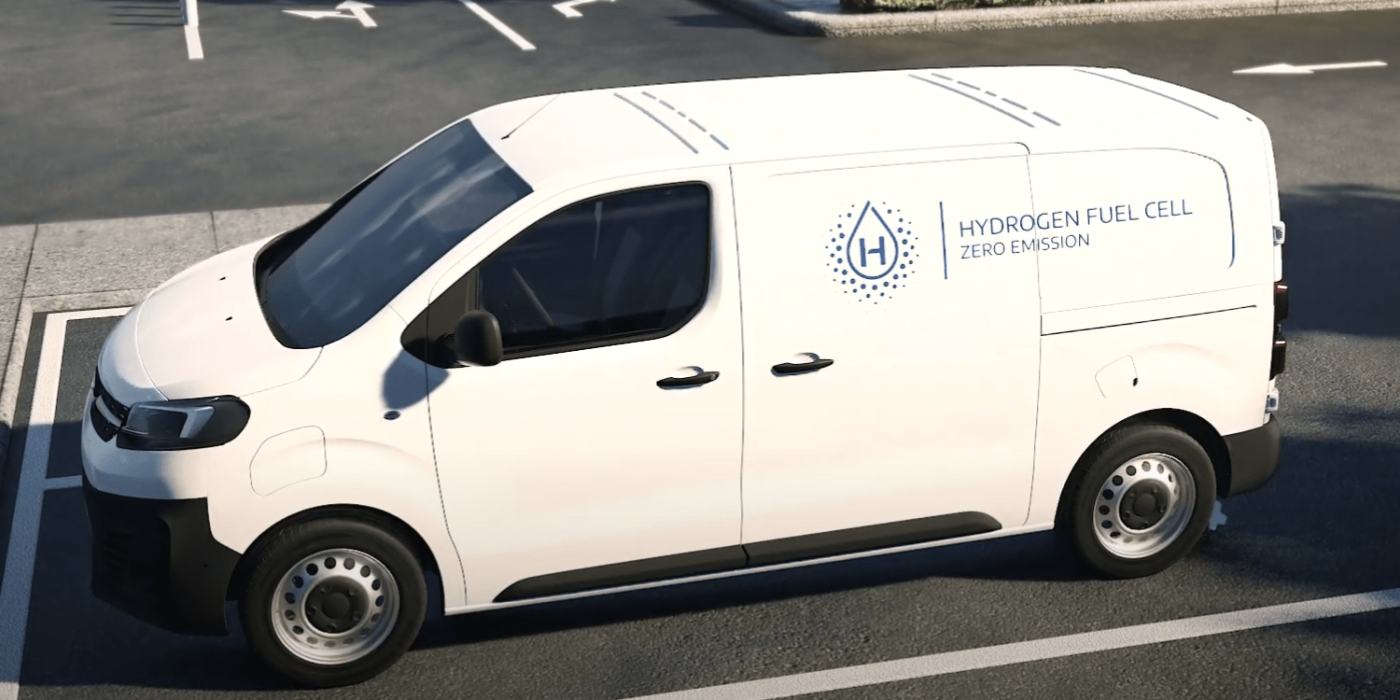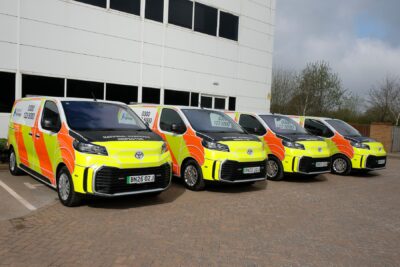Stellantis to deliver fuel cell transporters in 2021
The Stellantis Group has announced that three electric transporters from Opel, Peugeot and Citroën will also be offered with a fuel cell system this year, which should enable WLTP ranges of over 400 kilometres. Specifically, these are the Opel Vivaro, Peugeot Expert and Citroën Jumpy.
++ This article has been updated. Please scroll below. ++
The fuel cell systems for the mid-sized van range come from Symbio, the joint venture between Faurecia and Michelin established in 2019. The fuel cells produce 45 kW, which is significantly less than the power of the drive engine. The fuel cell is installed in the engine compartment above the electric motor.
The FCEV vans are based on the battery-electric versions of the three vans Opel Vivaro-e, the Peugeot e-Expert and the Citroën ë-Jumpy. Instead of the battery with up to 75 kWh, three hydrogen tanks are installed in the underbody of the vehicles, storing 4.4 kilograms of hydrogen. Faurecia supplies the tanks.
Like the small series of the Mercedes GLC F-Cell fuel-cell SUV, the FC vans from Stellantis also have a larger battery than the buffer battery in a Toyota Mirai. The 10.5 kWh battery (known from plug-in hybrids) is installed under the front seats and is supposed to last for up to 50 kilometres in the standard test – based on the consumption from our test with the Zafira-e Life, it is more likely to be 30-35 kilometres in real life. In contrast to the plug-in hybrids, the battery can be charged up to 11 kW, which corresponds to a charging time of 60 minutes. The 100 kW drive from Vitesco Technologies, familiar with the BEV variants, is responsible for propulsion.
https://www.youtube.com/watch?v=YEz31wUBD8g
Stellantis states that the fuel cell should provide “enough power for continuous motorway speed”. The battery is only supposed to provide additional power to the engine when more power is needed. However, the battery will probably also be used in the cold start phase until the fuel cell has reached its optimal working conditions.
The choice for this fuel cell battery concept was made after a lengthy development phase. Compared to a fuel cell range extender with less power and a larger battery, this concept achieves better performance, says Carla Gohin, senior vice president for research and innovation at Stellantis. They have combined the best of two worlds into one concept.
Stellantis LCV head Xavier Peugeot said during the presentation, which was broadcast online, that the hybrid concept of a mid-sized fuel-cell and battery-electric powertrain was ideal for the clientele. More than 83 per cent of customers would not drive more than 200 kilometres a day, and 44 per cent would never drive more than 300 kilometres. Nevertheless, there is a residual clientele that has higher demands.
German federal government supports the project with 5.7 million euros
The fuel cell transporters are built at Opel Special Vehicles in Rüsselsheim. There are several reasons for this: Firstly, Opel is responsible for the fuel cell activities within the PSA group. In October 2020, Opel boss Michael Lohscheller announced road tests with a fuel cell version of the Zafira for this year – now it has become the Vivaro commercial vehicle offshoot. On the other hand, the small series is funded by the German government with 5.7 million euros as part of the National Hydrogen Strategy. Stellantis does not yet specify how many of the small series will be built.
The vans themselves will have a load volume of up to 6.1 cubic metres and a payload of 1.1 tonnes. Like the BEV versions of the Vivaro-e and Zafira-e Life, the fuel cell variant is also to have a towing capacity of 1,000 kilograms. In contrast to the battery versions, the FC drive is only available in L2 and L3 lengths, i.e. with a length of 4.96 or 5.30 metres. The latter also offers 6.1 cubic metres of load space, while the L2 has 5.3 cubic metres.
Update 04 May 2021: News reached us on the small series. Opel CEO Lohscheller now told German media that his company would produce up to 2,000 fuel cell vans between 2021 and 2023. Order books will open as soon as this summer.
With reporting by Sebastian Schaal, Germany.
autoexpress.co.uk, eenewsautomotive.com, reuters.com, businessinsider.de (Update 04 May)





0 Comments